Paul Newman's 'Winning': A Movie That Ignited a Racing Legend
From humble beginnings Winning, became a high-profile vehicle for Paul Newman, credited with kick-starting his love affair with racing
WINNING
Released 1969
Director James Goldstone
Studio Universal Pictures
Stars Paul Newman, Joanne Woodward, Robert Wagner
Gross $14.6m (Budget $12m)
“I’d rather saw my fingers off than sit through that again,” claimed Quentin Tarantino (although, in the same interview he also said he didn’t enjoy Grand Prix or Le Mans and would rather watch one of Elvis Presley’s racing flicks).
QT isn’t totally off-base. Winning is not a great movie (though we’d argue that it’s better than The King’s Spinout or Speedway… but perhaps not Viva Las Vegas). Like Grand Prix, Winning tries to mix soap and sport but it lacks, among other things, the epic scale and international glamour of John Frankenheimer’s opus. It also suffers in parts from adopting a slightly unconvincing ‘European’ artiness that was in vogue at the time (close-ups of flowers near the track, blurry shots of spectators, an Antonioni-esque focus on shapes and spaces).
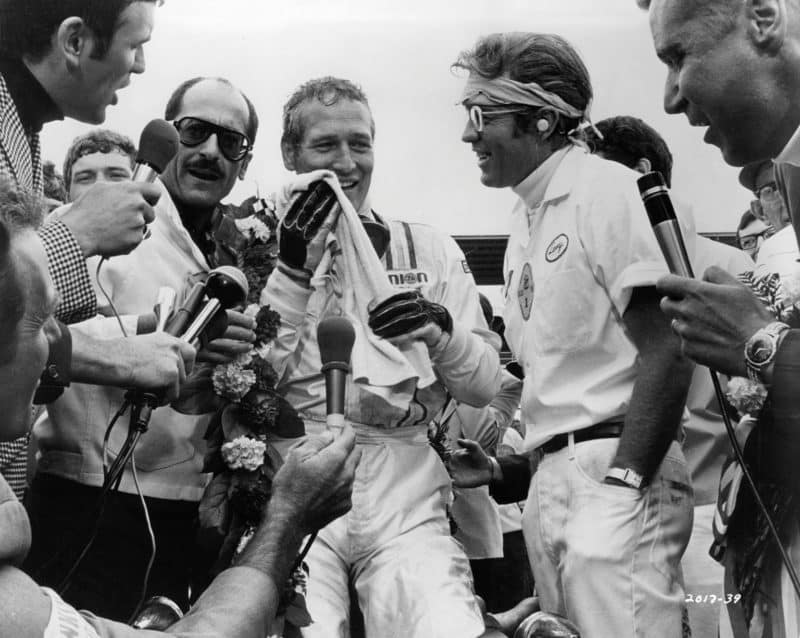
Having started out as a budget made-for-TV movie, Winning snowballed once Newman came onboard
Getty Images
The pretentions may be partly an attempt to disguise the film’s humble roots. It was originally planned as a low-budget TV movie of the week for the NBC network. But when Newman, then one of the biggest stars in the world, expressed an interest the project rapidly moved from the small screen to the big, with a commensurate shift in budget as Universal Pictures got involved to the tune of $12m (the equivalent of about $80m today). But even though the cast would now boast Newman, his Oscar-winning wife Joanne Woodward and, err… Robert Wagner, the script remained fairly unchanged from its small-screen origins.
Newman plays Frank Capua, an introverted driver, better with cars than people, who’s hoping to win the Indianapolis 500. Wagner plays his dashing rival, Luther, and Woodward is Elora, a divorcee who captures (and breaks) Frank’s heart. To add a little extra pathos, Elora has a son Charley (Richard Thomas, a few years before he would become John Boy in The Waltons) who quickly bonds with Frank, who discovers he enjoys being a father. It’s not exactly a bad plot, more a dull one. Interspersed with a couple of explosively well-acted scenes that seem completely out of place, like if Daniel Day-Lewis suddenly turned up in EastEnders. As reviewer Roger Ebert observed: “I wouldn’t say that Winning shouldn’t have been made, only that talent like Newman’s and Miss Woodward’s shouldn’t have been wasted on it.”
The truth is, the film would have long since faded into oblivion if it wasn’t for two things: the quality of the racing scenes and the legend that this was the film that began Newman’s passion for motor sport. However, the actor – who had been attending the Indy 500 for years – questioned the second point.
“It’s only partially true that Winning got me interested in racing,” said Newman. “I was interested before that, but I just hadn’t done anything about it.”
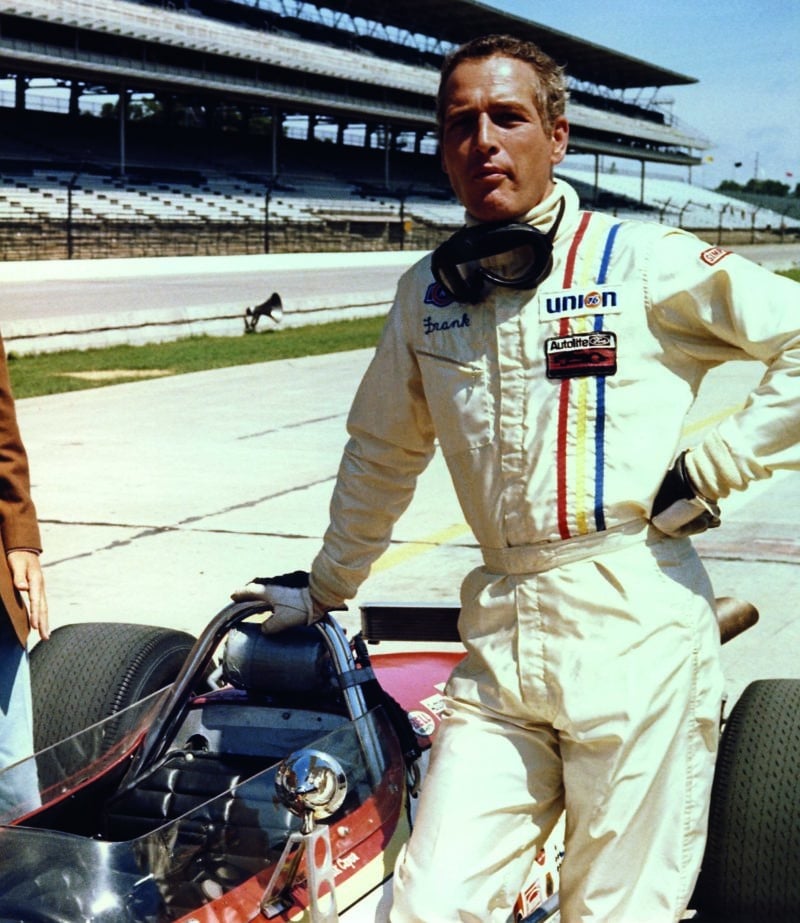
Newman on set
Corbis via Getty Images
In fact, he was already a regular attendee at the Indy 500 and had started tinkering with cars, transforming the family Volkswagen into a more potent beast for his regular commutes from the theatre where he was working in New York to home in Connecticut.
“I was complaining to my mechanic about driving the VW back and forth,” he told Motor Trend magazine in a 1970 interview. “And he said, ‘Why don’t you dump a Porsche engine in it, and you’ll still retain your back seat but have all the power you need.’ So we dropped in a stock Porsche engine, installed sway bars, Konis [shock absorbers] and Dunlop Super Sports [tyres]. The car handled so well that we put in a Porsche Super 90 engine and then put Porsche brakes up front. Later we bored out the Super 90 to 1800cc and put a hot cam in it. It was a neat little bomb. I guess that was my first so-called ‘hopped-up’ street machine…”
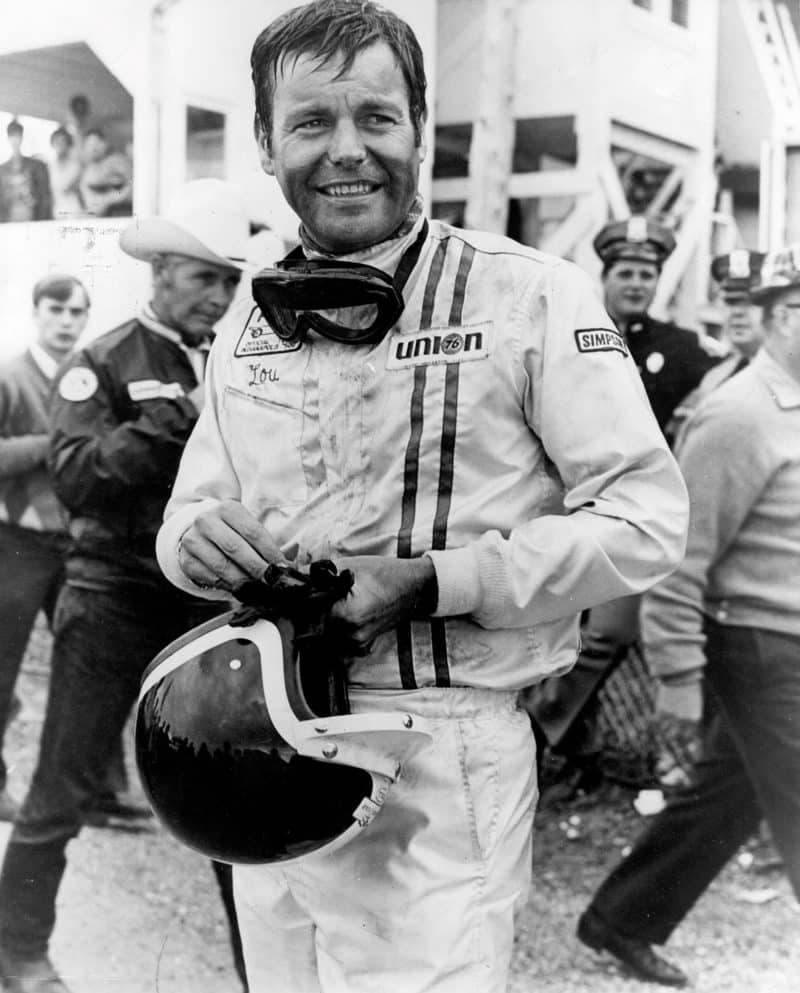
Wagner on set
Getty Images
The die had been cast. Newman would ‘tinker’ with cars for the rest of his life. And in hindsight it’s clear that his decision to make Winning had more to do with the racing elements than the dramatic ones. However, following the success of Grand Prix, the bar on racing movies had been raised. NBC’s plan to string together existing race footage around the story would not suffice. For Winning to have credibility with audiences it needed to do for the IndyCar series what Grand Prix had done with Formula 1: make the viewer feel they were really at the race. Fortunately, the film now had the budget to do that.
It was decided that Newman would attend Bob Bondurant’s racing school (Bondurant had worked with James Garner for Grand Prix). The instruction was thorough. It began in the classroom, where the fundamentals of racing were taught: beating the clock and beating the competition. There was advice on heel-and-toe techniques to save seconds moving foot from throttle to brake. Then the actor learned the track, walking around it and discussing what was expected for each turn, from the approach apex to the exit line. Finally, he learned the car – how to sit, how to steer, the unique controls, staying at the right rpm.
Bondurant took him around in a special training car until it was Newman’s turn to drive. He began in a Lola 270 and after a week was in a Ford Grand National stock car. “He was so smooth,” recalled Bondurant, “it was like he’d been driving for years.”
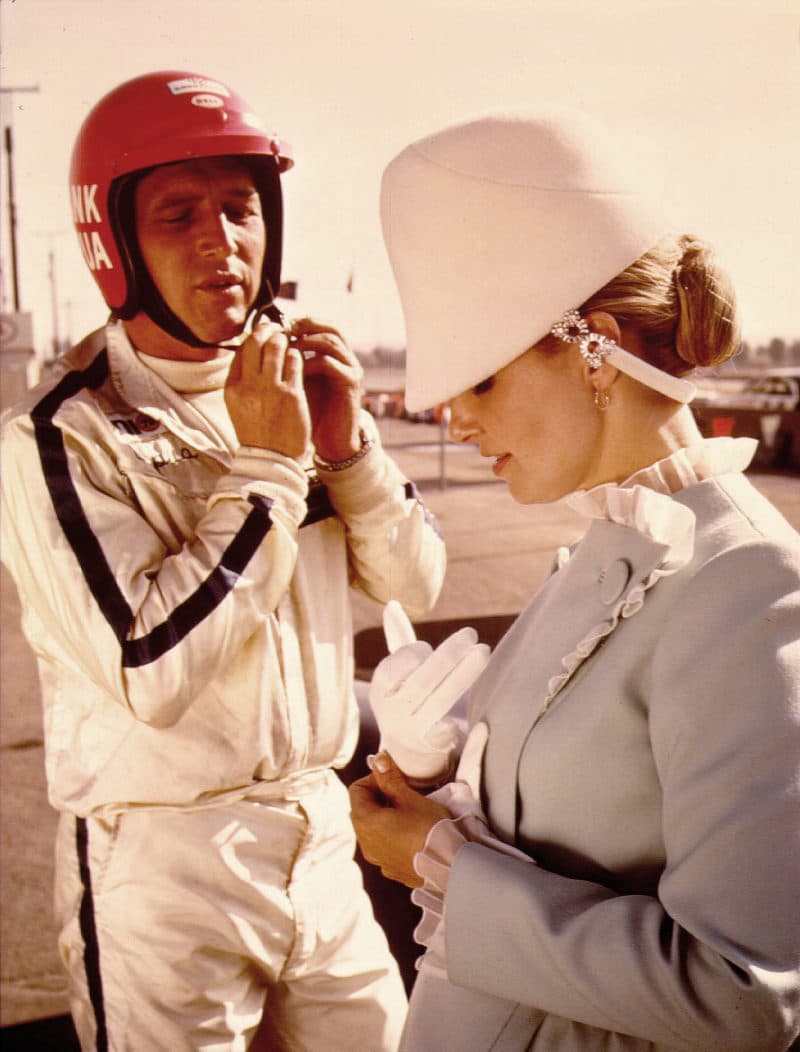
Newman as Capua
Getty Images
After training, Newman refused to use a stunt driver when filming began for the race scenes so the studios had him insured for $3m. The film crew worked from a track in Elkhart Lake, a village in Wisconsin known for its racing ties – Road & Track magazine still holds an annual race car Concours d’Elegance there each summer and The Road America course is nearby.
“I couldn’t dance, couldn’t play tennis… The first thing I ever did gracefully in my life was in my car” – Paul Newman
Newman’s first day in Wisconsin naturally drew crowds and the Milwaukee Journal sent a reporter who filed that the first day’s filming “was uneventful, with grey and sometimes rainy conditions” and that the cast and crew included 150 people plus extras for the crowd scenes – recruited by the local employment office, who offered the princely sum of $15 a day. As the locals got used to his presence, Newman relaxed and was often seen around town, in the local bars and coffee shops. Most of his time though was spent hanging around the track and talking to the other drivers. He was regularly described as ‘grinning gleefully’ and it was probably here that his passion for racing took hold.
Location shooting took place on Memorial Day at the Indy 500 where they captured the actors among the race day colour and also had access to all the track footage – including a spectacular 17-car smash that made it into the final film.
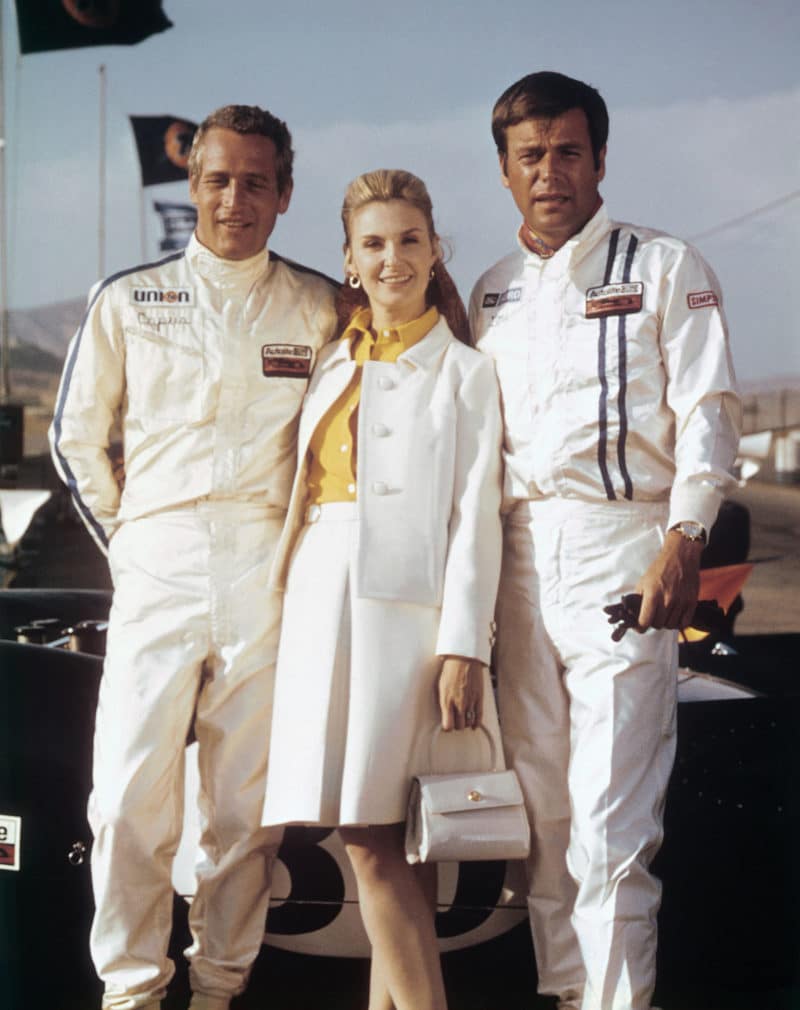
Newman (Frank Capua) with his actress wife Joanne Woodward (Elora Capua) and fellow actor Robert Wagner (Luther Lou Erding) on the set of Winning in 1969
Getty Images
The combination of the Indy 500 footage, Newman’s own exploits in Wisconsin and a team of editors ensured that Winning succeeded in its goal of giving audiences a real sense of IndyCar racing. The New York Times praised the film as “a big, vibrant, rhythmic kaleidoscope of sights and sounds that almost pops the screen” and even described the dramatic scenes between the races as “refreshingly intelligent”. It was the 16th biggest film of the year at the box office, eventually turning a profit for the studio. But ultimately, the legacy of Winning is the effect it had on its star. After playing a race driver he decided, at the age of 44, to become one.
“I couldn’t dance, I couldn’t play tennis, I did everything bad,” he once said. “The first thing I ever did gracefully in my life was in my car.” He would race for the rest of his life. Driving a Lotus Elan, he won his first-ever Sports Car Club of America race in 1972 before graduating to a series of ever-more powerful Datsuns while winning four SCCA national championships between 1979 and 1986. He would become a team owner, partnering with Bill Freeman to form Newman-Freeman Racing and later with Carl Haas to form Newman/Haas Racing, one of the most successful teams in IndyCar racing.
Perhaps Newman’s greatest accomplishment as a driver was his second-place finish in the Le Mans 24 Hours in 1979, driving a Porsche 935 as part of Dick Barbour’s three-man team. “I had a lot of fun filming Winning but I never had a chance to stretch my legs and find out what I could do in a car,” Newman later reflected. “It took me three years of rearranging my schedule before I could find time to get my licence. But after that, I never did a film between April and September. Racing was all I did.”